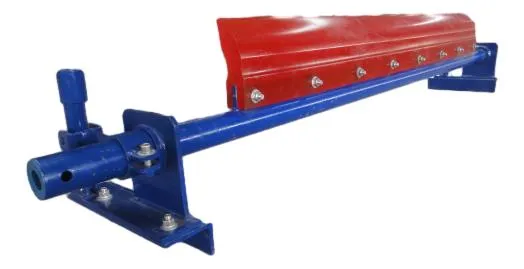 Afrikaans
Afrikaans  Albanian
Albanian  Amharic
Amharic  Arabic
Arabic  Armenian
Armenian  Azerbaijani
Azerbaijani  Basque
Basque  Belarusian
Belarusian  Bengali
Bengali  Bosnian
Bosnian  Bulgarian
Bulgarian  Catalan
Catalan  Cebuano
Cebuano  Corsican
Corsican  Croatian
Croatian  Czech
Czech  Danish
Danish  Dutch
Dutch  English
English  Esperanto
Esperanto  Estonian
Estonian  Finnish
Finnish  French
French  Frisian
Frisian  Galician
Galician  Georgian
Georgian  German
German  Greek
Greek  Gujarati
Gujarati  Haitian Creole
Haitian Creole  hausa
hausa  hawaiian
hawaiian  Hebrew
Hebrew  Hindi
Hindi  Miao
Miao  Hungarian
Hungarian  Icelandic
Icelandic  igbo
igbo  Indonesian
Indonesian  irish
irish  Italian
Italian  Japanese
Japanese  Javanese
Javanese  Kannada
Kannada  kazakh
kazakh  Khmer
Khmer  Rwandese
Rwandese  Korean
Korean  Kurdish
Kurdish  Kyrgyz
Kyrgyz  Lao
Lao  Latin
Latin  Latvian
Latvian  Lithuanian
Lithuanian  Luxembourgish
Luxembourgish  Macedonian
Macedonian  Malgashi
Malgashi  Malay
Malay  Malayalam
Malayalam  Maltese
Maltese  Maori
Maori  Marathi
Marathi  Mongolian
Mongolian  Myanmar
Myanmar  Nepali
Nepali  Norwegian
Norwegian  Norwegian
Norwegian  Occitan
Occitan  Pashto
Pashto  Persian
Persian  Polish
Polish  Portuguese
Portuguese  Punjabi
Punjabi  Romanian
Romanian  Russian
Russian  Samoan
Samoan  Scottish Gaelic
Scottish Gaelic  Serbian
Serbian  Sesotho
Sesotho  Shona
Shona  Sindhi
Sindhi  Sinhala
Sinhala  Slovak
Slovak  Slovenian
Slovenian  Somali
Somali  Spanish
Spanish  Sundanese
Sundanese  Swahili
Swahili  Swedish
Swedish  Tagalog
Tagalog  Tajik
Tajik  Tamil
Tamil  Tatar
Tatar  Telugu
Telugu  Thai
Thai  Turkish
Turkish  Turkmen
Turkmen  Ukrainian
Ukrainian  Urdu
Urdu  Uighur
Uighur  Uzbek
Uzbek  Vietnamese
Vietnamese  Welsh
Welsh  Bantu
Bantu  Yiddish
Yiddish  Yoruba
Yoruba  Zulu
Zulu Optimizing Conveyor Pulleys for Efficient Industrial Material Handling Systems
Industrial Conveyor Pulleys Essential Components in Material Handling
Industrial conveyor pulleys are critical components in the material handling industry, playing a significant role in the efficient and safe transport of goods across various applications. These pulleys are utilized in multiple settings, including manufacturing plants, warehouses, and distribution centers, where they help reduce manual labor, improve productivity, and streamline processes.
At its core, a conveyor pulley is a cylindrical device that provides a means to guide and support the conveyor belt as it operates. The primary functions of these pulleys include driving the conveyor belt, redirecting it around bends, and supporting the belt at various points throughout the system. Typically made from robust materials such as steel, aluminum, or plastic, these pulleys are designed to withstand heavy loads, resist wear and tear, and operate efficiently in challenging environments.
There are several types of industrial conveyor pulleys, each serving a specific purpose based on the function they perform
. The most common types include1. Drive Pulleys These are located at the head of the conveyor and are responsible for driving the belt forward. They are usually powered by an electric motor that transfers torque to the pulley, which in turn moves the belt. Drive pulleys are designed to handle high loads and are often equipped with a rubberized surface to improve traction.
industrial conveyor pulleys

2. Idler Pulleys Found along the length of the conveyor belt, idler pulleys provide necessary support to the belt and help keep it aligned. They play a crucial role in maintaining the tension and tracking of the belt, ensuring that it runs smoothly without slipping or misalignment.
3. Tail Pulleys Located at the end of the conveyor system, tail pulleys help to return the belt to its original position after it has conveyed material. These pulleys are typically designed to be low friction and are essential for the effective operation of the conveyor system.
4. snub Pulleys These pulleys are used to change the direction of the belt, providing additional tension where needed. Snub pulleys are strategically placed to ensure proper belt tension and to enhance the overall efficiency of the conveyor system.
The selection of the right type of pulley is crucial for the performance of the conveyor system. Factors such as the weight of the material being transported, the speed of the conveyor, and the operational environment must be considered in the selection process. Proper maintenance and inspection of conveyor pulleys are also essential to prevent breakdowns and ensure the longevity of the equipment. Regular checks for wear, alignment, and overall condition can minimize downtime and maximize productivity.
In conclusion, industrial conveyor pulleys are indispensable in the modern manufacturing and distribution landscape. Their ability to sustain heavy loads, facilitate movement, and improve efficiency makes them a vital part of any conveyor system. As technology advances, so too will the design and performance of these pulleys, leading to even more efficient material handling solutions in the future. Whether in a factory or a logistics center, understanding the significance of conveyor pulleys helps in optimizing operations and achieving operational excellence.
-
Revolutionizing Conveyor Reliability with Advanced Rubber Lagging PulleysNewsJul.22,2025
-
Powering Precision and Durability with Expert Manufacturers of Conveyor ComponentsNewsJul.22,2025
-
Optimizing Conveyor Systems with Advanced Conveyor AccessoriesNewsJul.22,2025
-
Maximize Conveyor Efficiency with Quality Conveyor Idler PulleysNewsJul.22,2025
-
Future-Proof Your Conveyor System with High-Performance Polyurethane RollerNewsJul.22,2025
-
Driving Efficiency Forward with Quality Idlers and RollersNewsJul.22,2025





























